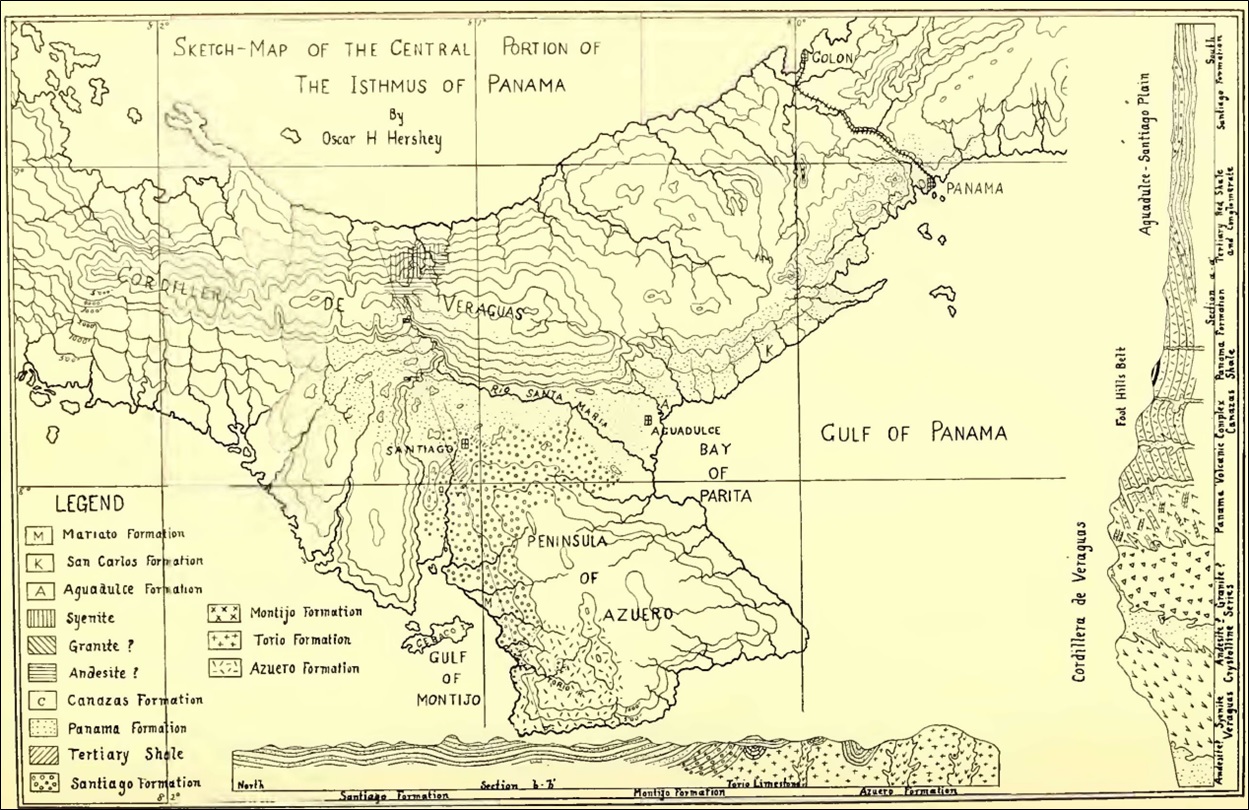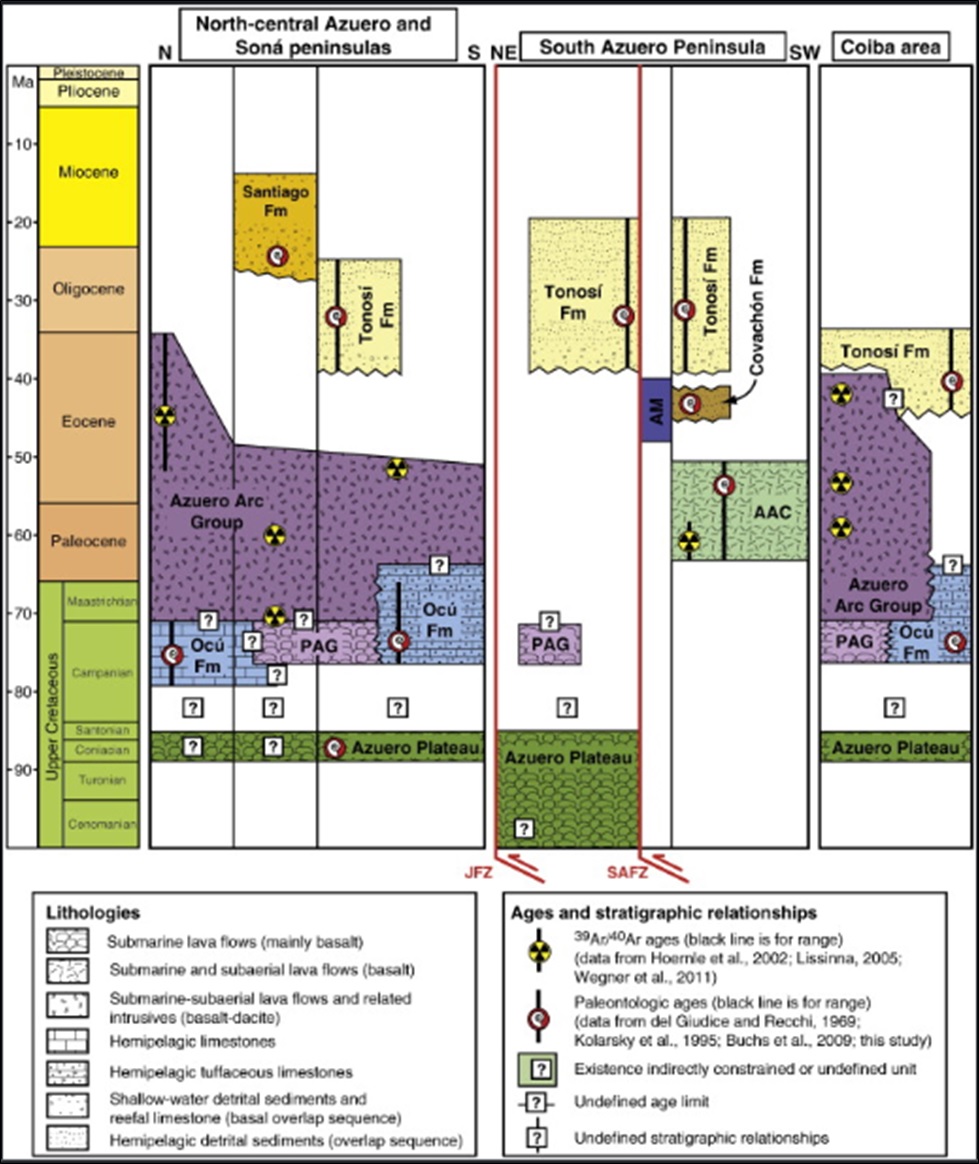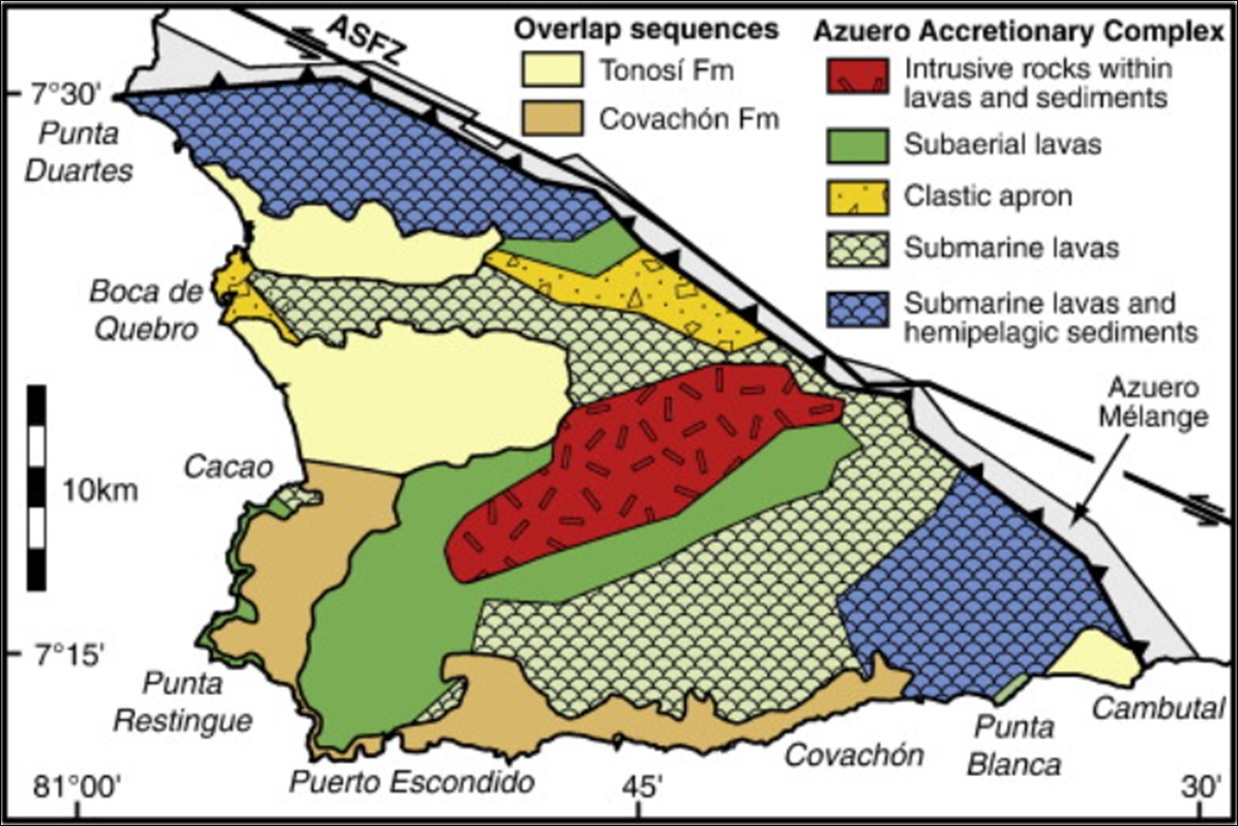Azuero Arc Gr
Type Locality and Naming
[Figure 1. The earliest known geological sketch map of the Central Portion of the Isthmus of Panama zoomimg in on the Azuero Peninsula. The map displays the formations known at that time and described by Hershey (1901).]
Synonym: Azuero Fm; Azuero Accretionary Complex
Lithology and Thickness
[Figure 2. A zoom-in of the Azuero Gr (Azuero Accretionary Complex) which forms the SW edge of the Azuero Peninsula. It represents an accretionary complex composed of Cretaceous to Eocene accreted seamounts and oceanic islands. Modified from Buchs et al. (2008, 2011). Also in Barat (2013).]
[Figure 3. Tectonostratigraphic chart showing the igneous complexes exposed on the Azuero Peninsula and surrounding areas as well as the sedimentary formations overlapping them. The ages of all formations/complexes were measured either by 40 Ar/39 Ar or Paleontologic methods (Barat (2013) and Modified from Buchs et al. (2008)). Note that Buchs et al. (2011) and Barat (2013) now includes the Pesé Fm as part of the Tonosí Fm, and the Macaracas Fm as the equivalent of the Santiago Fm.]
Relationships and Distribution
Lower contact
Upper contact
Regional extent
GeoJSON
Fossils
Age
Depositional setting
Additional Information
References:
- Hershey (1901)
- Wilmarth (1938).
- Woodring (1960). Poorly defined name for basement altered volcanic rocks. Late Jurassic or Early Cretaceous age was suggested.
- Keroher et al. (1966).


